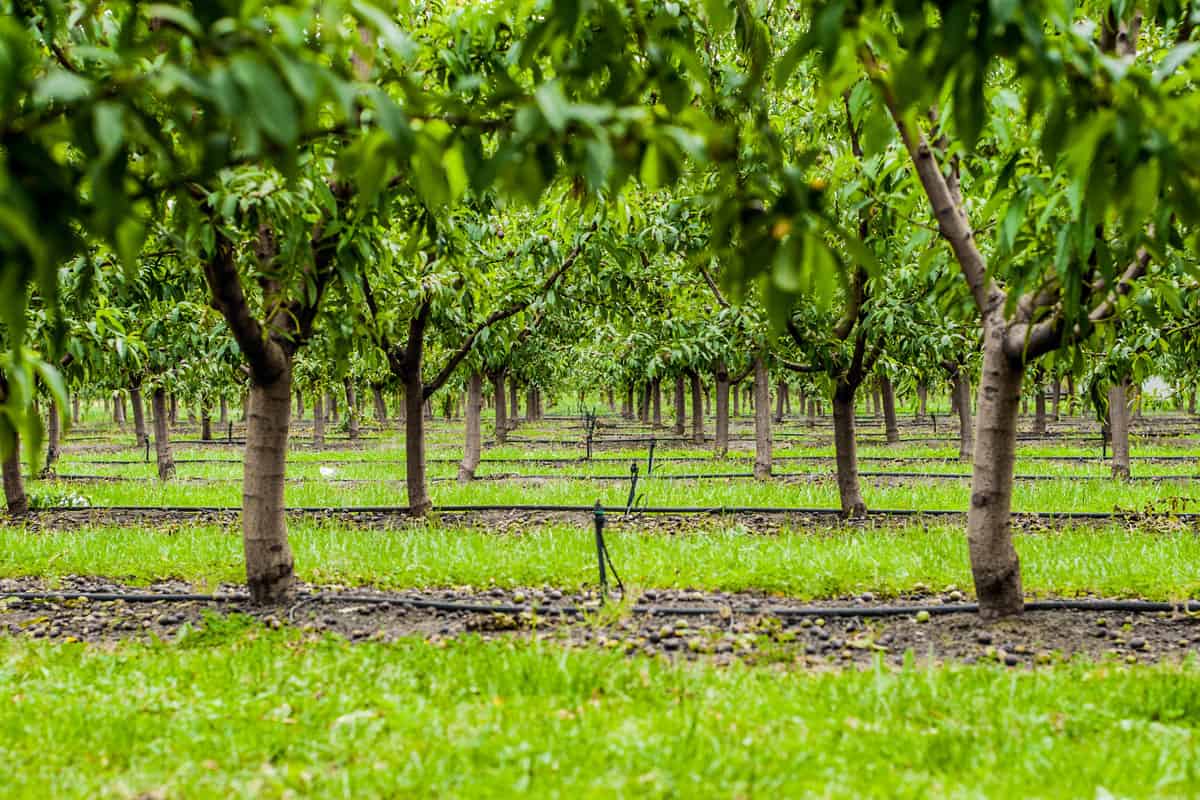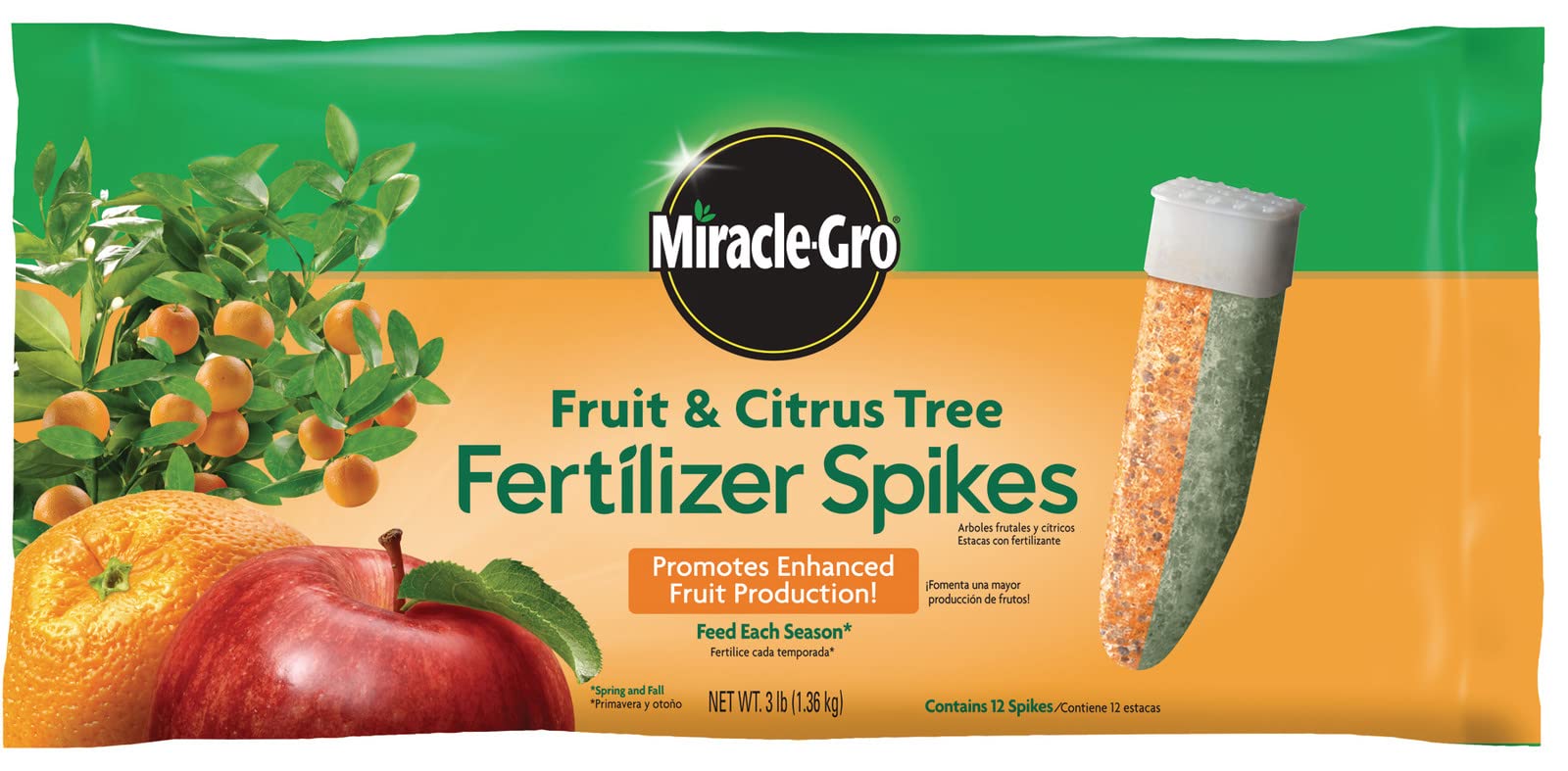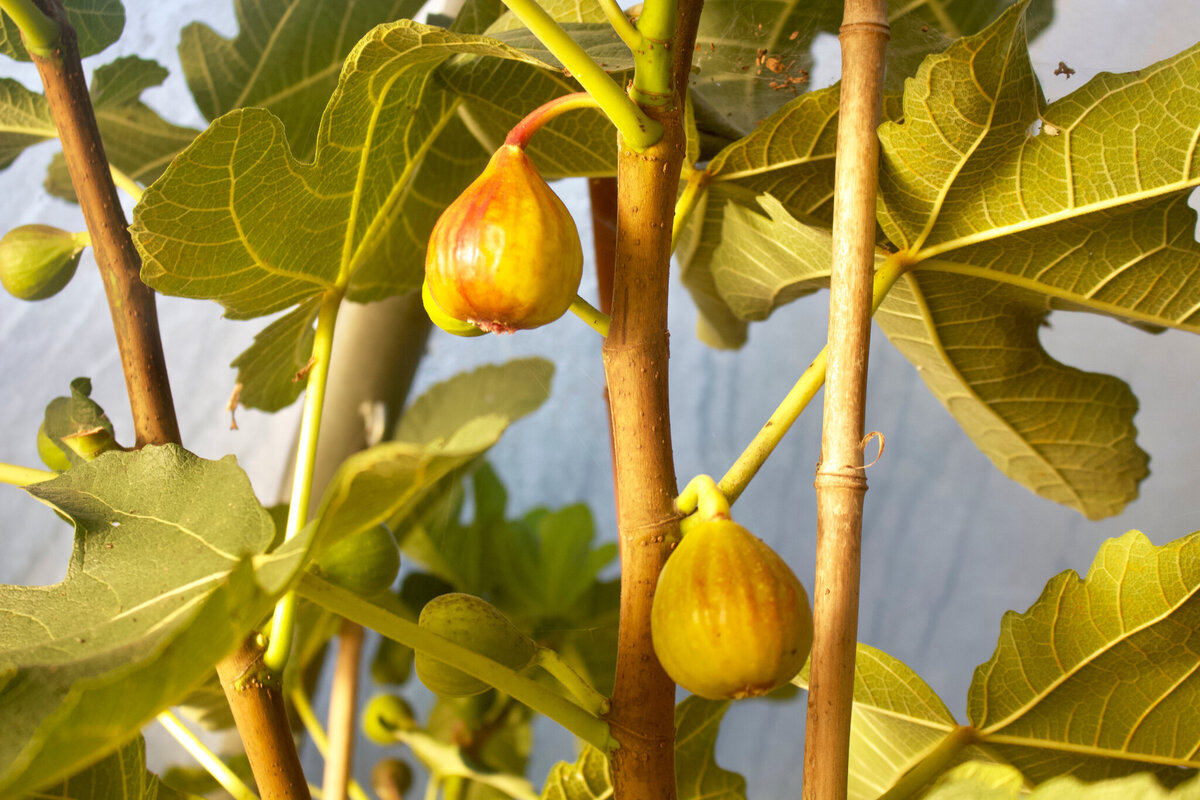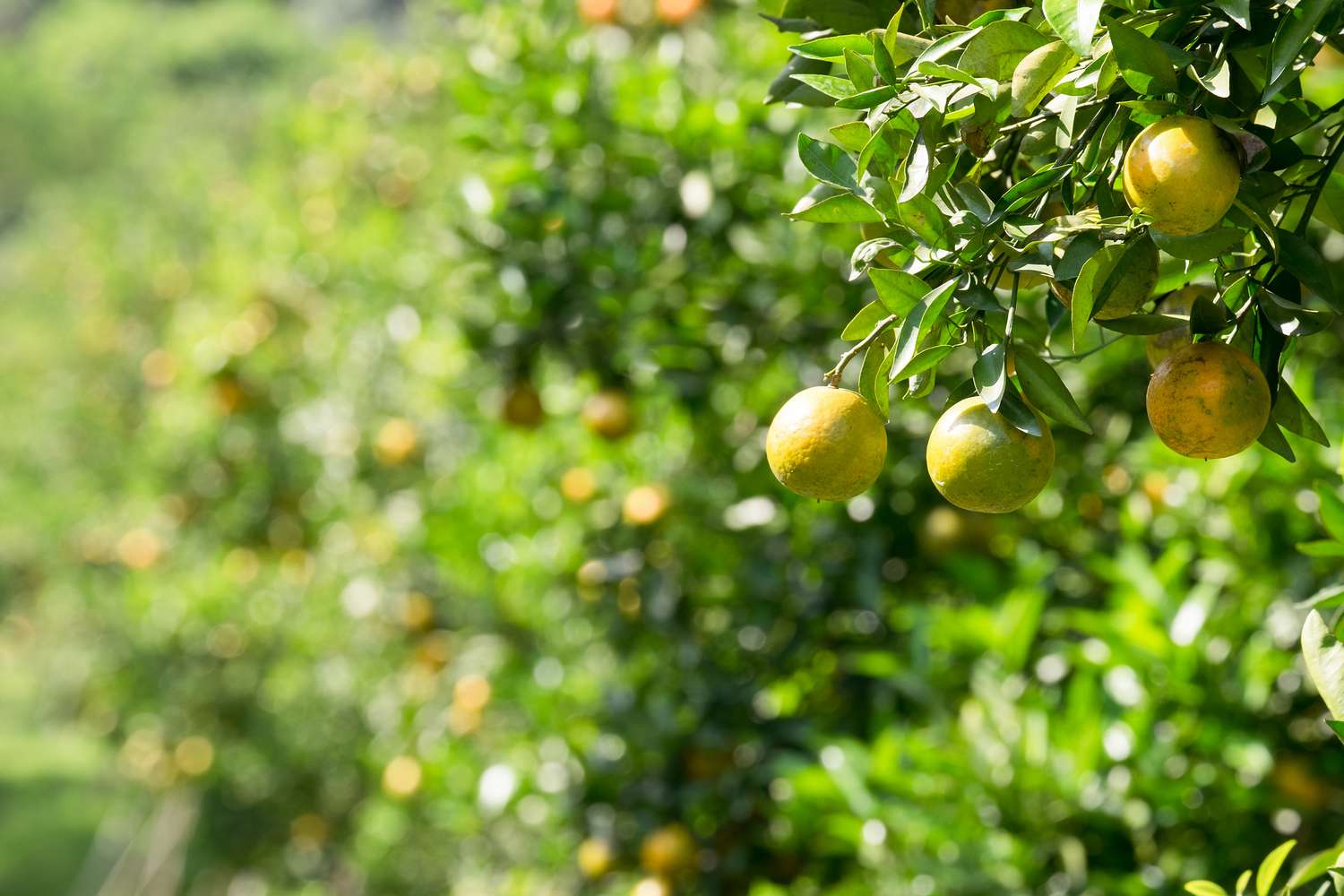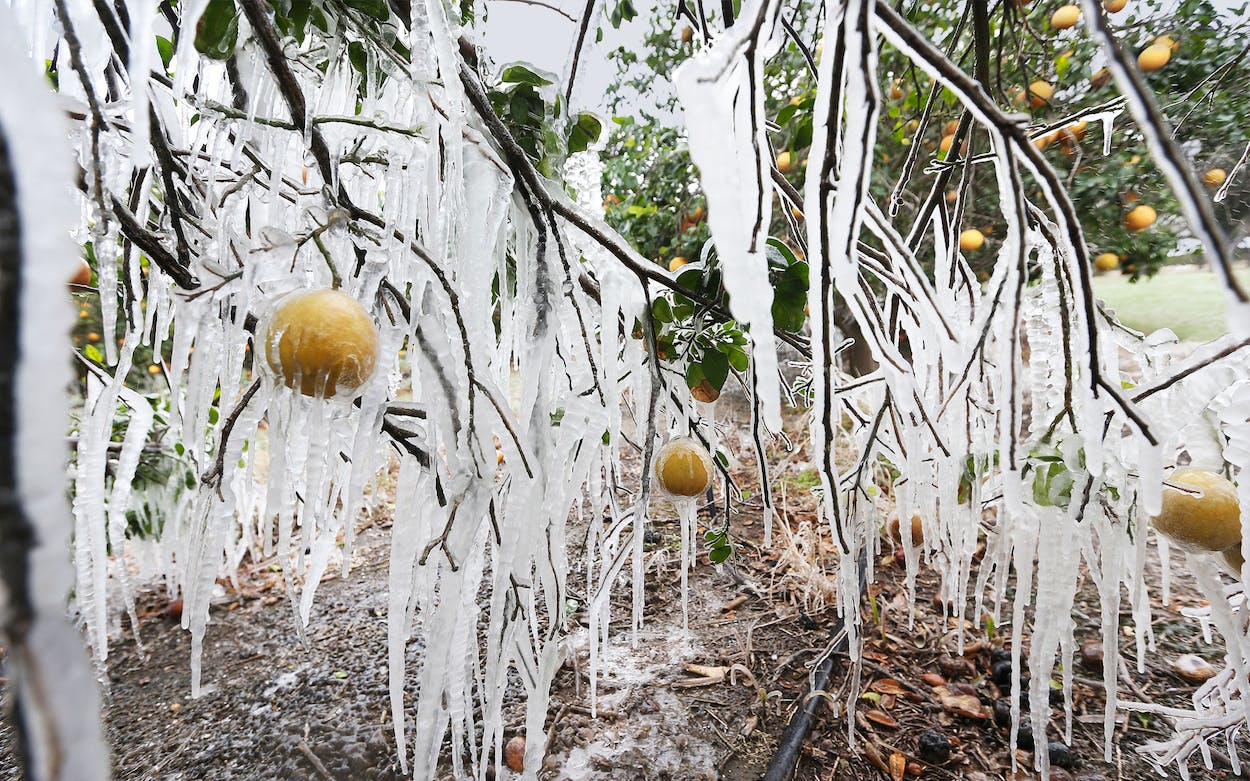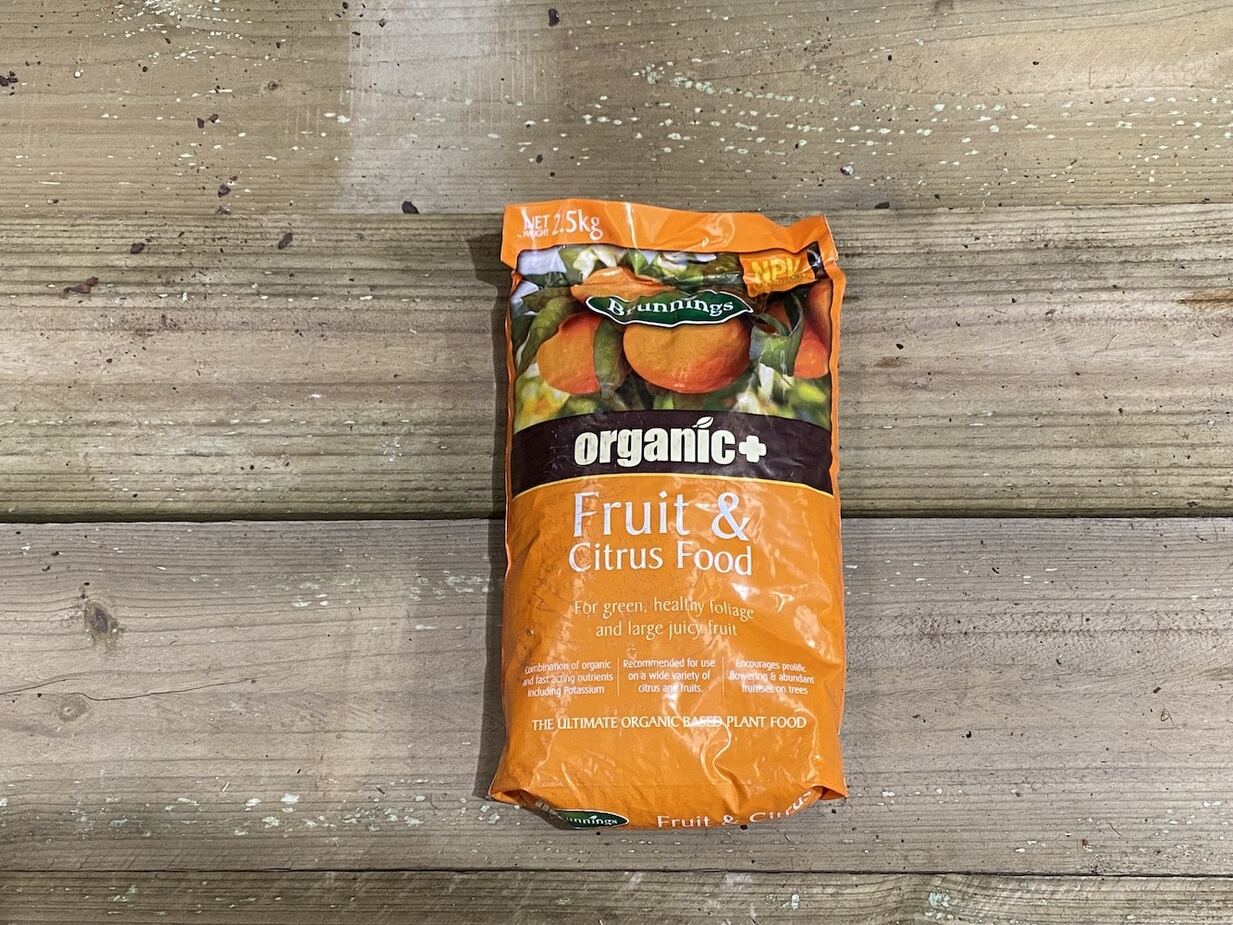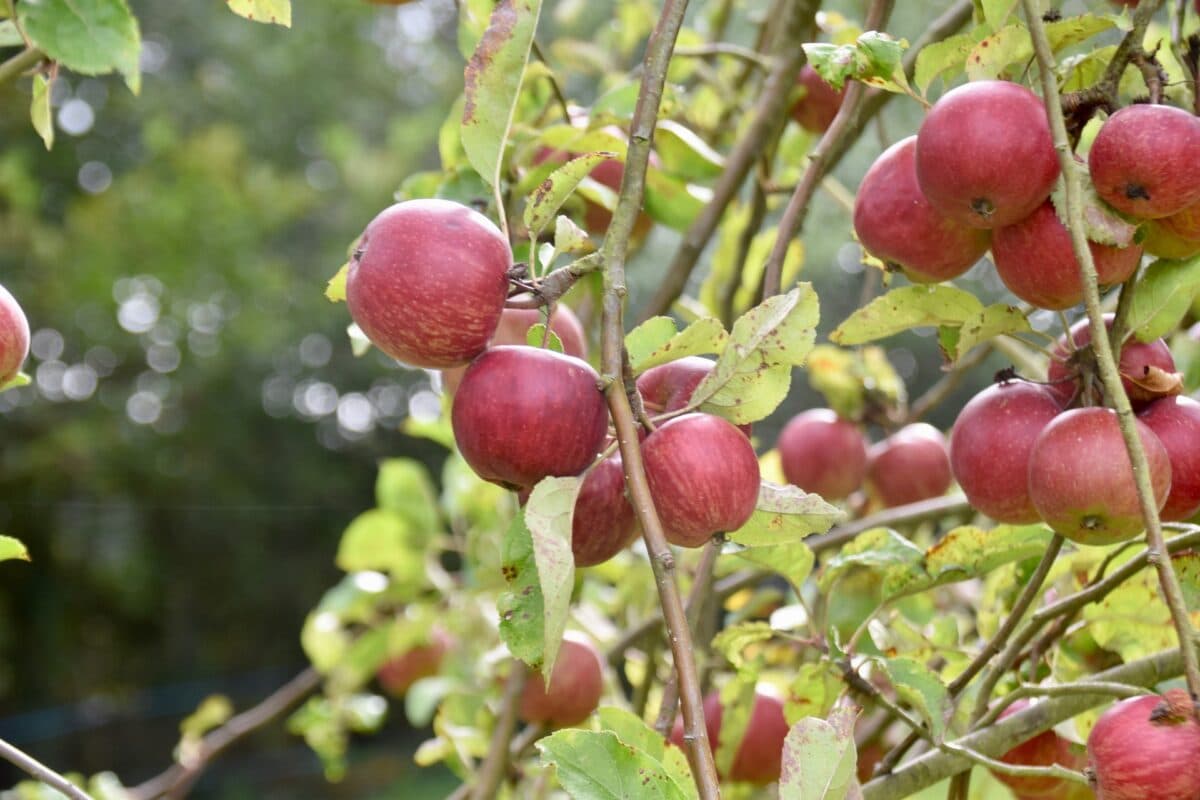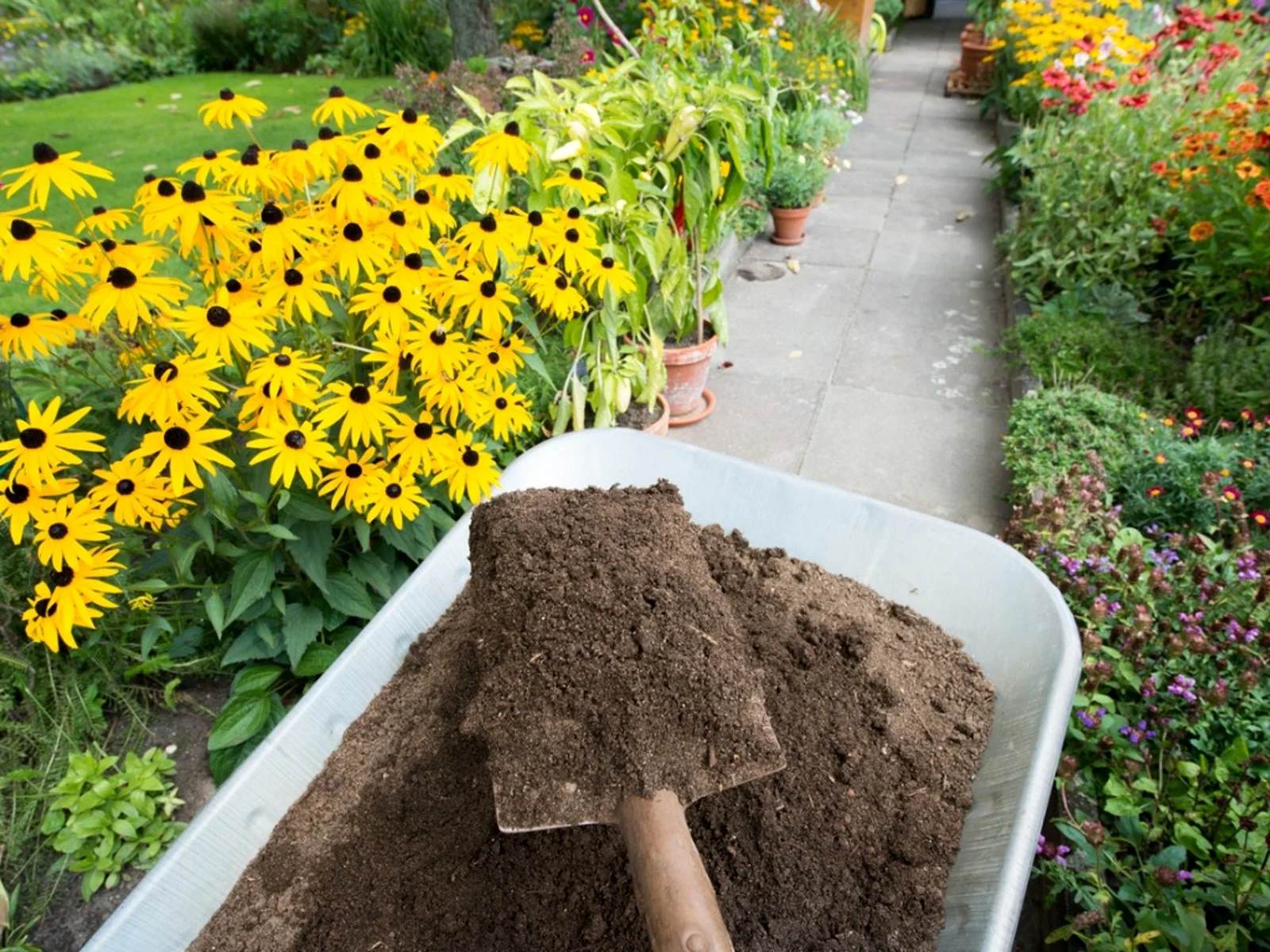Home>Gardening Tips and Tricks>Eco-Friendly Gardening>When To Fertilize Citrus Trees
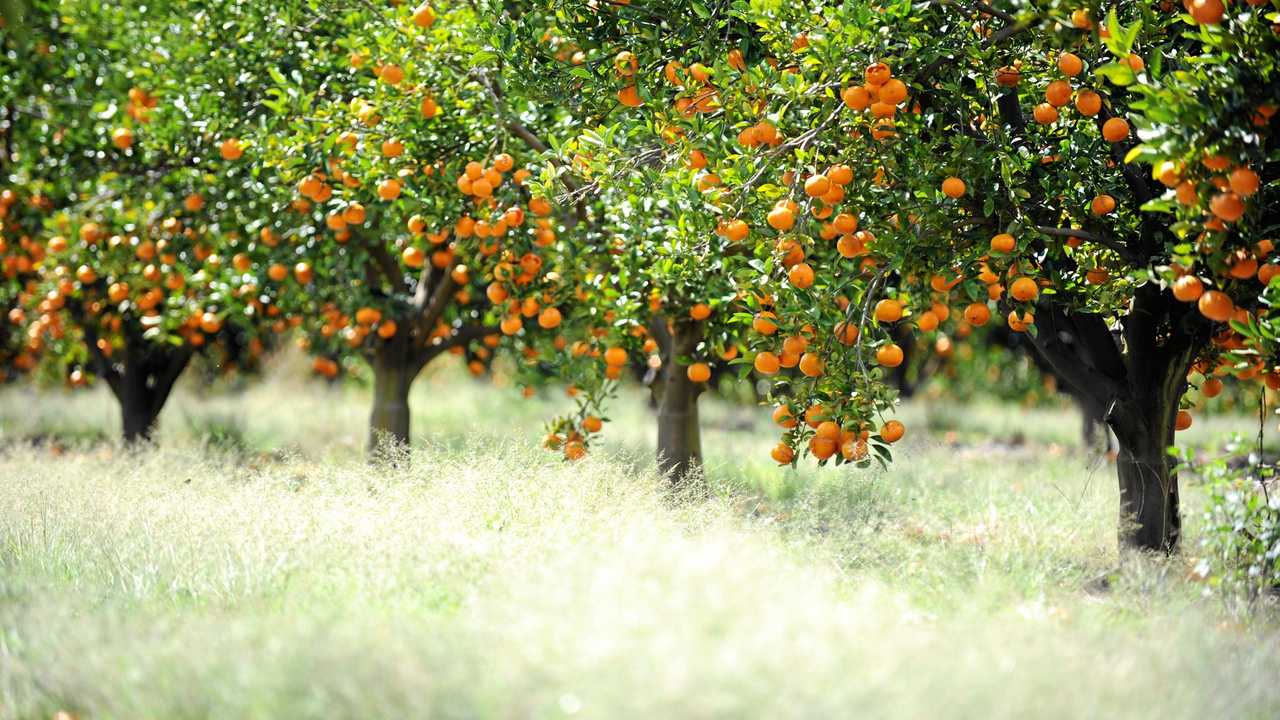

Eco-Friendly Gardening
When To Fertilize Citrus Trees
Published: November 5, 2023
Learn when and how to fertilize citrus trees in an eco-friendly manner, ensuring healthy growth and abundant yields. Discover expert tips and techniques for sustainable gardening.
(Many of the links in this article redirect to a specific reviewed product. Your purchase of these products through affiliate links helps to generate commission for Chicagolandgardening.com, at no extra cost. Learn more)
Table of Contents
Introduction
Welcome to the world of eco-friendly gardening where sustainability meets beauty. One of the key aspects of eco-friendly gardening is adopting practices that minimize harm to the environment while still achieving stunning garden results. Eco-friendly gardening encompasses a wide range of practices, from composting and water conservation to using organic pest control methods.
When it comes to gardening, some of the most popular plants to cultivate are citrus trees. Citrus trees not only provide delicious fruits but they also add a touch of freshness and vibrancy to any garden. However, to ensure that your citrus trees thrive and produce a bountiful harvest, it is important to understand the importance of proper fertilization.
Fertilizing citrus trees is a crucial step in their care regimen. It provides the necessary nutrients for growth, helps maintain the tree’s health, and improves fruit quality. In this article, we will delve into the various factors that affect the timing of citrus tree fertilization, signs that indicate your tree needs fertilization, the best times to fertilize, and a step-by-step guide to effectively fertilizing your citrus trees. Let’s dive in!
Understanding Citrus Tree Fertilization
Fertilization is the process of replenishing essential nutrients in the soil to support plant growth and development. When it comes to citrus trees, a well-balanced and properly timed fertilization regimen is vital for optimal health and fruit production.
Before we discuss the timing of fertilization, let’s first understand the key nutrients that citrus trees require. The primary macronutrients that citrus trees need are nitrogen (N), phosphorus (P), and potassium (K). These nutrients play crucial roles in various aspects of tree growth and fruit development.
Nitrogen is responsible for promoting lush and healthy foliage growth, phosphorus aids in root development and flower formation, and potassium helps improve fruit quality and overall tree vigor.
In addition to the macronutrients, citrus trees also benefit from secondary nutrients like calcium, magnesium, and sulfur, as well as trace elements such as iron, manganese, zinc, copper, and boron. These micronutrients are essential for various metabolic processes and overall tree health.
It’s important to note that the nutrient requirements of citrus trees may vary depending on factors such as age, soil conditions, and climate. Young or newly planted citrus trees require less fertilizer compared to established trees. Sandy soils may require more frequent fertilization due to higher nutrient leaching, while clay soils may retain nutrients for longer periods.
Understanding the specific nutrient needs of your citrus trees is crucial for providing targeted fertilization. Soil testing can help determine the nutrient levels and pH of your soil, enabling you to make informed decisions regarding fertilization.
In the next section, we will explore the factors that affect the timing of citrus tree fertilization. Understanding these factors will help you develop a proper fertilization schedule and ensure the health and productivity of your citrus trees.
Factors Affecting Fertilization Timing
Timing is key when it comes to fertilizing citrus trees. Several factors influence the appropriate timing for fertilization, ensuring that the nutrients are available to the trees when they need them the most. Let’s take a closer look at these key factors:
- Tree Age: The age of the citrus tree plays a significant role in determining when to fertilize. Young trees require less frequent fertilization, typically every 6-8 weeks during the growing season. As the tree matures, the frequency can be reduced to 3-4 times per year for established trees.
- Growth Stage: Citrus trees have specific growth stages where they have varying nutritional needs. During the active growth phase, which usually occurs in spring and summer, trees have higher nutrient demands. Fertilizing during this stage ensures the availability of nutrients for optimal growth and development.
- Climate and Weather Conditions: Climate and weather conditions affect the nutrient requirements of citrus trees. In regions with distinct seasons, fertilizing should be done before the onset of the active growth period and during the months leading up to fruiting. In warmer climates, where growth occurs year-round, fertilization can be scheduled accordingly.
- Disease and Pest Pressure: Citrus trees that are under stress from diseases or pest infestations may have altered nutrient needs. It’s important to address these issues promptly and adjust the fertilization schedule to support tree recovery.
- Soil Conditions: The nutrient content and pH levels of the soil can influence the timing and frequency of fertilization. Conducting soil tests will provide valuable information about the nutrient levels and help determine the appropriate timing and types of fertilizers to use. Acidic soils may require additional limestone applications to adjust pH levels and promote nutrient availability.
By considering these factors, you can develop a fertilization schedule tailored to the specific needs of your citrus trees. It’s worth noting that over-fertilizing or fertilizing at the wrong time can lead to nutrient imbalances, tree stress, and runoff, which can harm the environment.
In the next section, we will discuss the signs that indicate your citrus tree needs fertilization. Identifying these signs will help you determine when it’s time to provide the essential nutrients for your trees’ health and vitality.
Signs That Your Citrus Tree Needs Fertilization
Properly fertilizing your citrus tree is essential for its overall health and productivity. However, it can sometimes be challenging to determine when your tree needs fertilization. Here are some common signs that indicate your citrus tree may require a nutrient boost:
- Pale or Yellowing Leaves: One of the most evident signs of nutrient deficiency is the appearance of pale or yellowing leaves. This happens when the tree lacks essential nutrients like nitrogen, iron, or magnesium. Fertilizing can help replenish these nutrients and restore the vibrant green color to the leaves.
- Stunted Growth: If your citrus tree appears smaller or has slowed its growth compared to previous years, it may be a sign of nutrient deficiency. Fertilization can provide the necessary nutrients that promote healthy growth and development.
- Poor Fruit Production: If your citrus tree is not producing as many fruits as it should, nutrient deficiency could be the culprit. Inadequate levels of potassium and phosphorus, in particular, can hinder flower production and fruit development. Fertilizing can help stimulate fruit production and improve their quality.
- Leaf Drop: Excessive leaf drop can occur when a citrus tree lacks essential nutrients, especially nitrogen. If you notice an unusually high amount of leaf drop, it is likely a sign that your tree needs fertilization to replenish the nutrient levels.
- Weak Branches or Twig Dieback: Nutrient deficiencies can weaken the branches and twigs of citrus trees, making them susceptible to breakage or dieback. Fertilizing can strengthen the tree’s structure, improve its resilience, and reduce the risk of limb damage.
An important note: It’s essential to differentiate between nutrient deficiencies and other problems that may cause similar symptoms, such as disease, pests, or insufficient water. If you suspect an issue, it’s recommended to seek guidance from a local horticulturist or Extension Service.
Recognizing these signs and symptoms will help you identify when your citrus tree needs fertilization. In the next section, we will discuss the best times to fertilize your citrus trees to maximize their health and fruit production.
Best Times to Fertilize Citrus Trees
Fertilizing your citrus trees at the right time is crucial for ensuring optimal growth, health, and fruit production. While the specific timing may vary depending on factors such as climate and tree age, here are some general guidelines to consider:
- Spring: Early spring is an ideal time to fertilize citrus trees, as it coincides with the active growth period. Applying a balanced fertilizer during this time provides the necessary nutrients for new leaf and shoot development.
- Summer: For citrus trees that experience a second flush of growth during the summer months, a supplemental fertilizer application may be beneficial. This helps support the additional growth and increases the tree’s nutrient reserves.
- Fall: Late fall or early winter is another suitable time for fertilization, especially in regions with mild winters. This helps prepare the tree for the upcoming dormant period and provides essential nutrients for root development and overall tree health.
It’s important to note that specific fertilizer formulations and application rates may vary based on the nutrient requirements of your citrus trees and the results of soil tests. Always follow the product instructions and consult with local horticulturists or extension services for specific recommendations.
In addition to regular fertilization during the growing season, it can be beneficial to apply organic mulch around the base of the tree year-round. Mulching helps conserve moisture, regulate soil temperature, and slowly release nutrients into the soil as it decomposes.
Remember to water your citrus trees thoroughly after fertilization to ensure the nutrients are properly absorbed by the roots. Adequate irrigation is crucial for maximizing the benefits of fertilization and preventing nutrient leaching.
By adhering to these guidelines and considering the specific needs of your citrus trees, you can optimize their growth, productivity, and overall health.
Next, we will provide a step-by-step guide to effectively fertilize your citrus trees, ensuring that you provide the nutrients they require in the most efficient and environmentally-friendly manner.
Step-by-Step Guide for Fertilizing Citrus Trees
Fertilizing your citrus trees doesn’t have to be a complicated process. By following a few simple steps, you can ensure that your trees receive the nutrients they need for optimal growth and fruit production. Here’s a step-by-step guide to help you fertilize your citrus trees effectively:
- Choose the Right Fertilizer: Select a fertilizer specifically formulated for citrus trees and labeled with the appropriate nutrient ratios. Look for a balanced fertilizer that contains nitrogen (N), phosphorus (P), and potassium (K), along with secondary nutrients and trace elements.
- Determine the Fertilizer Application Rate: The application rate will depend on the size and age of your citrus tree. Refer to the product label for the recommended amount, or consult with local horticulturists or extension services for specific guidelines. Over-fertilizing can be harmful, so it’s essential to apply the correct amount.
- Prepare the Area Around the Tree: Clear away any mulch or debris from the base of the tree, creating a 1-2 foot drip line around the canopy. This area will be the target for fertilizer application.
- Spread the Fertilizer: Evenly distribute the fertilizer within the designated area, avoiding direct contact with the trunk. Use a handheld spreader or apply it by hand, ensuring that the granules are spread out uniformly.
- Incorporate the Fertilizer: Using a garden fork or rake, lightly incorporate the fertilizer into the top layer of soil. Be careful not to disturb the tree’s shallow roots. Once incorporated, water the area thoroughly to help activate the fertilizer and ensure proper nutrient absorption.
- Reapply as Needed: Monitor your citrus tree’s growth and observe any signs of nutrient deficiency. Depending on your tree’s needs and soil conditions, repeat the fertilization process every 6-8 weeks during the growing season or as recommended by soil tests.
- Maintain Good Watering Practices: Adequate water is essential for nutrient uptake by the tree’s roots. Water deeply and regularly, especially during dry periods, to ensure that the fertilizers are properly dissolved and absorbed by the tree.
Remember to wear protective gloves and follow all safety guidelines provided by the fertilizer manufacturer. Always store fertilizers in a cool, dry place away from children and pets.
By following this step-by-step guide, you can effectively fertilize your citrus trees, promoting their health and vitality throughout the year.
In the next section, we will discuss common mistakes to avoid when fertilizing citrus trees to ensure the best results for your garden.
Common Mistakes to Avoid When Fertilizing Citrus Trees
Fertilizing citrus trees is essential for their overall health and productivity. However, it’s important to be aware of common mistakes that can hinder the effectiveness of fertilization and potentially harm your trees. Here are some mistakes to avoid:
- Over-Fertilization: Applying too much fertilizer can lead to nutrient imbalances, root burn, and environmental pollution. Always follow the recommended application rates and avoid the temptation to apply more fertilizer thinking it will benefit the tree.
- Under-Fertilization: On the other hand, insufficient fertilization can result in nutrient deficiencies, leading to stunted growth and poor fruit production. It’s crucial to provide your citrus trees with the necessary nutrients they require for optimal health.
- Applying Fertilizer Too Close to the Trunk: Direct contact between the fertilizer and the trunk can cause damage to the tree. Keep the granules a few inches away from the trunk to prevent burning or rotting of the bark.
- Ignoring Soil Conditions: Fertilizer requirements can vary depending on the soil’s nutrient content and pH levels. Conduct a soil test to determine the specific needs of your citrus trees and adjust the fertilizer type and application accordingly.
- Applying Fertilizer During Dormant Periods: Citrus trees may not require fertilizer during the dormant period when they are not actively growing. Applying fertilizer during this time can lead to nutrient leaching and waste. Instead, focus on providing nutrients when the tree is actively growing.
- Not Watering Properly After Fertilization: Watering after fertilization is crucial to help dissolve the granules and deliver the nutrients to the tree’s roots. Ensure deep watering to help the nutrients penetrate the soil and prevent nutrient runoff.
- Using the Wrong Type of Fertilizer: Citrus trees have specific nutrient requirements, and using the wrong type of fertilizer may not provide the necessary elements. Look for fertilizers formulated specifically for citrus trees and follow their nutrient ratios.
- Disregarding the Trees’ Environmental Needs: Citrus trees thrive in different climates and soil types. Consider the local climate, prevailing weather conditions, and specific environmental factors when determining the timing and frequency of fertilization.
- Skipping Soil Testing: Soil testing is an essential tool for understanding your soil’s nutrient composition and pH levels. Without this information, you may be guessing the nutrient requirements of your trees, which can lead to over or under-fertilization.
Avoiding these common mistakes and following proper fertilization techniques will help ensure that your citrus trees receive the right amount of nutrients they need to thrive and produce an abundant, healthy harvest.
Now, let’s conclude this comprehensive guide to eco-friendly gardening and fertilizing citrus trees, summarizing the key points we’ve discussed throughout the article.
Conclusion
Eco-friendly gardening is all about embracing sustainable practices while creating beautiful and thriving gardens. When it comes to cultivating citrus trees, proper fertilization is key to their growth, health, and fruit production. Understanding the nutrient requirements, timing, and techniques of fertilization can significantly impact the success of your citrus trees.
By following the guidelines outlined in this article, you can ensure that your citrus trees receive the right nutrients at the right time. Remember to consider factors such as tree age, growth stage, climate, and soil conditions when determining the timing of fertilization.
Recognizing the signs of nutrient deficiency, such as yellowing leaves or stunted growth, will help you take appropriate action and provide the necessary nutrients to your trees. Following a step-by-step fertilization guide ensures that the fertilizers are applied correctly and absorbed by the roots.
Avoiding common mistakes, such as over-fertilization, applying fertilizer too close to the trunk, or neglecting soil testing, will help you maintain the health and vigor of your citrus trees. Additionally, providing proper irrigation and mulching will enhance the effectiveness of fertilization.
By practicing eco-friendly gardening techniques, including responsible fertilization, you can create a sustainable and beautiful garden while minimizing harm to the environment. Enjoy the fruits of your labor as you watch your citrus trees flourish and produce delicious, homegrown citrus fruits.
Remember, every action you take in your garden has the potential to make a positive impact on the planet. So get out there, embrace eco-friendly practices, and let your garden thrive in harmony with nature.
